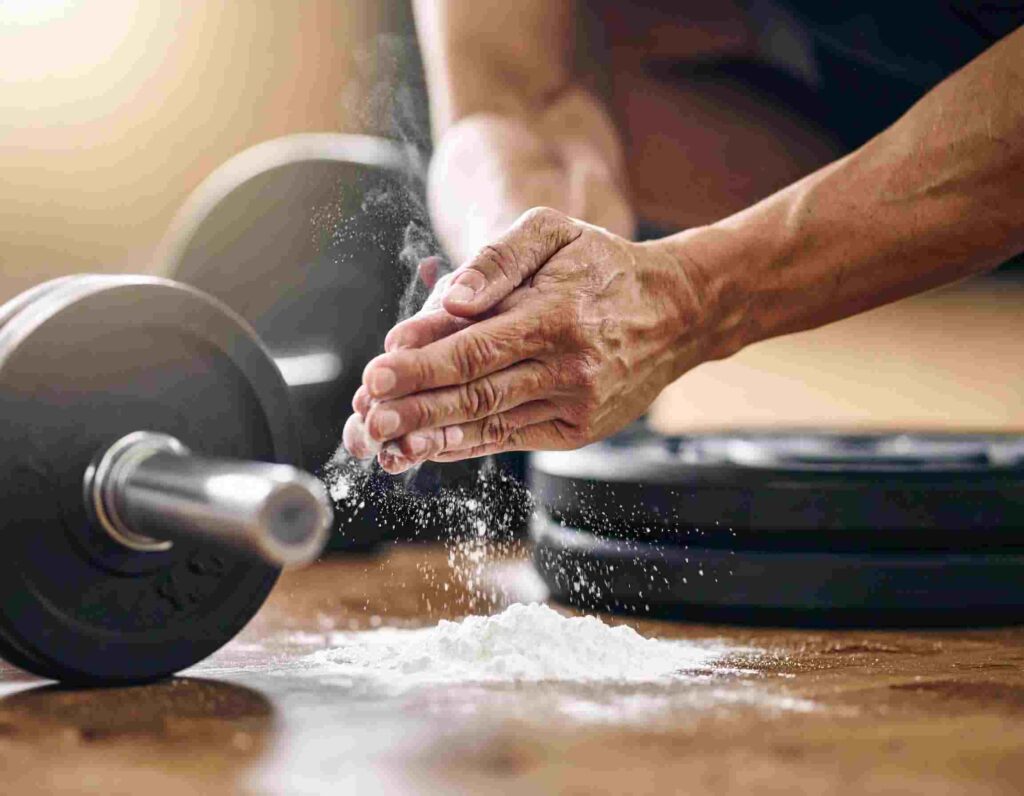Ever walk into a gym and see people lifting with a clear sense of purpose, seemingly knowing the exact weight they need for every set? Chances are, they’re not just guessing. They are likely using a systematic approach to intensity, and one of the most effective methods is harnessing the power of 1RM percentages for training. This strategy moves you from simply exercising to training with precision.
Understanding your one-rep max (1RM)—the absolute most weight you can lift for a single repetition of an exercise—is the first step. By calculating and using percentages of this number, you can unlock a structured path to progressive overload. This is the secret sauce for consistent gains. Whether you want to build raw strength, pack on muscle, or improve your endurance, a program based on 1RM percentages for training provides a clear roadmap to success.
What Are 1RM Percentages and Why Do They Matter?
At its core, using 1RM percentages for training is a method of autoregulating your workout intensity. Instead of winging it, you base the weight on the bar on a specific percentage of your known maximum strength. This method, known as percentage-based training, removes ambiguity from your sessions, ensuring the training stimulus is perfectly aligned with your fitness goals.
The primary benefit lies in its inherent structure for progressive overload. As you grow stronger, your true 1RM increases. By re-evaluating your 1RM periodically, your training weights adjust upwards, continuously challenging your muscles to adapt. This prevents the dreaded training plateau, where progress grinds to a halt because the stimulus is no longer sufficient.
The Science of Strength Adaptation
Percentage-based training is deeply rooted in exercise physiology. Different intensity zones, represented by 1RM percentages, trigger distinct physiological responses.

- Maximal Strength (85-100% 1RM): This high-intensity zone is the key to improving neuromuscular efficiency. It trains your central nervous system to fire more muscle fibers at once, leading to significant gains in pure strength.
- Hypertrophy (65-85% 1RM): Often called the “muscle-building zone,” this range provides the ideal blend of mechanical tension and metabolic stress, two primary drivers for increasing muscle size.
- Muscular Endurance (50-65% 1RM): Performed for higher repetitions, this lower-intensity zone challenges the muscle’s ability to resist fatigue over time. It’s also great for technique refinement and active recovery days.
By intelligently programming different percentage ranges into your routine, you can specifically target the adaptations you desire most.
How to Find Your One-Rep Max
Before you can use percentages, you need a starting number. You can find your 1RM through two main methods: direct testing or indirect estimation.
Direct 1RM Testing
Directly testing your 1RM means you warm up thoroughly and work your way up to a single, maximal-effort repetition. While it’s the most accurate measure, it’s also highly taxing on your body and central nervous system. This method is best reserved for experienced lifters who have mastered their technique on the lift being tested. A missed lift or break in form can easily lead to injury.
Indirect 1RM Estimation (The Safer, Smarter Choice)
For the vast majority of gym-goers, estimating your 1RM is safer, faster, and nearly as effective. This involves performing a set of multiple repetitions (typically 3-10 reps) with a submaximal weight and using that data to predict your max.
While you can use various formulas (like the Epley or Brzycki formula), the most straightforward method is an online calculator. It eliminates human error and gives you an instant, reliable number to build your program around.
Stop Guessing, Start Progressing. Calculate Your 1RM Now!
Are you ready to train with precision? Our free One Rep Max Calculator makes it easy. Just enter a weight you recently lifted and the number of reps you performed to failure. You’ll get an accurate 1RM estimate you can use to structure your workouts immediately. Take control of your training and unlock consistent gains by knowing your numbers. Try the 1 Rep Max Calculator today!
Applying 1RM Percentages for Specific Training Goals
With your 1RM established, you can now build a highly effective workout plan. Here is how different percentage zones align with common fitness objectives:
| Training Goal | % of 1RM | Repetition Range | Primary Adaptation |
| Maximal Strength | 85-100% | 1-5 | Improved neuromuscular recruitment and peak force production. |
| Hypertrophy | 65-85% | 6-12 | Increased muscle cross-sectional area (muscle size). |
| Muscular Endurance | 50-65% | 15-20+ | Enhanced fatigue resistance and work capacity. |
| Power/Explosiveness | 30-70% | 3-6 | Improved rate of force development (moving weight quickly). |
What About Periodization?
You don’t have to live in one percentage zone. The most successful long-term programs utilize periodization, which means cycling through different training phases (or “blocks”) that focus on different goals.

- Linear Periodization: You might spend 4 weeks in a hypertrophy phase (e.g., 75% 1RM for 10 reps), followed by 4 weeks in a strength phase (e.g., 90% 1RM for 3 reps).
- Undulating Periodization: You could vary the intensity within the same week. For example, Monday might be a heavy strength day (85-95% 1RM), Wednesday a moderate hypertrophy day (70-80% 1RM), and Friday a light power day (50-60% 1RM).
This planned variation is crucial for managing fatigue and breaking through plateaus.
Autoregulation: When to Deviate from the Plan
Percentage-based training provides a fantastic structure, but it’s not infallible. Life happens. Poor sleep, high stress, or subpar nutrition can affect your strength on any given day. This is where autoregulation—adjusting your training based on how you feel—becomes important.
A simple way to do this is by using the Rate of Perceived Exertion (RPE) scale alongside your percentages. RPE is a scale of 1-10 rating how difficult a set was.
If your program calls for 5 reps at 85% and it feels like an RPE 10 (a true maximum-effort set), it might be wise to lower the weight. If it feels like an RPE 7 (you had 3 reps left in the tank), you might be cleared to add a small amount of weight. This hybrid approach gives you the best of both worlds: a solid plan and the flexibility to adapt.
People Also Ask: Common Questions on 1RM Percentages
How often should I re-test my 1RM?
For most lifters, re-calculating your 1RM every 4 to 8 weeks is a solid strategy. This gives your body enough time to make meaningful strength adaptations from your training block.
Should I use 1RM percentages for all exercises?
Percentage-based training is most effective for the big, multi-joint compound lifts: squats, bench presses, deadlifts, and overhead presses. For smaller isolation or accessory exercises (like bicep curls or tricep pushdowns), it’s often more practical to focus on achieving a target rep range with good form and a challenging weight.
What if I can’t complete all the reps?
It happens! If you fail to hit your target reps on a set, it’s a sign of fatigue. The best course of action is to slightly reduce the weight for the next set to ensure you can complete the work with good form. If you consistently miss reps, it likely means your programmed 1RM is a bit too high or you aren’t recovering adequately.
Is this method good for beginners?
Yes, it’s an excellent tool for beginners. It teaches the principle of structured progression from day one. However, beginners should always use an estimated 1RM and prioritize mastering perfect exercise technique before worrying about lifting heavy. For a comprehensive look at starting out, this Beginner’s Guide to Strength Training from Nerd Fitness is a fantastic resource.
The Takeaway: From Guesswork to Gains
Stepping away from random workouts and adopting a system like 1RM percentages for training is a turning point for any serious lifter. It provides the structure, clarity, and mechanism for progressive overload needed for long-term success. You’ll train with more confidence, break through plateaus, and see more consistent results in your strength and physique.
The journey starts with knowing your number.
Ready to build a smarter, stronger you? Use our 1 Rep Max Calculator to find your starting point and revolutionize your training today!






